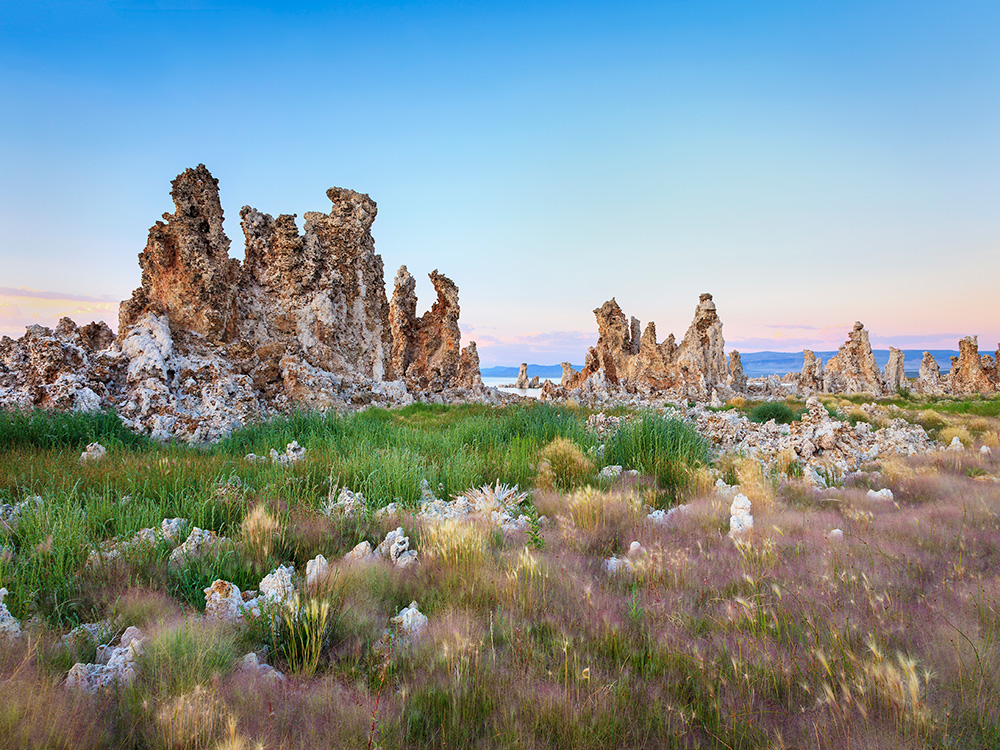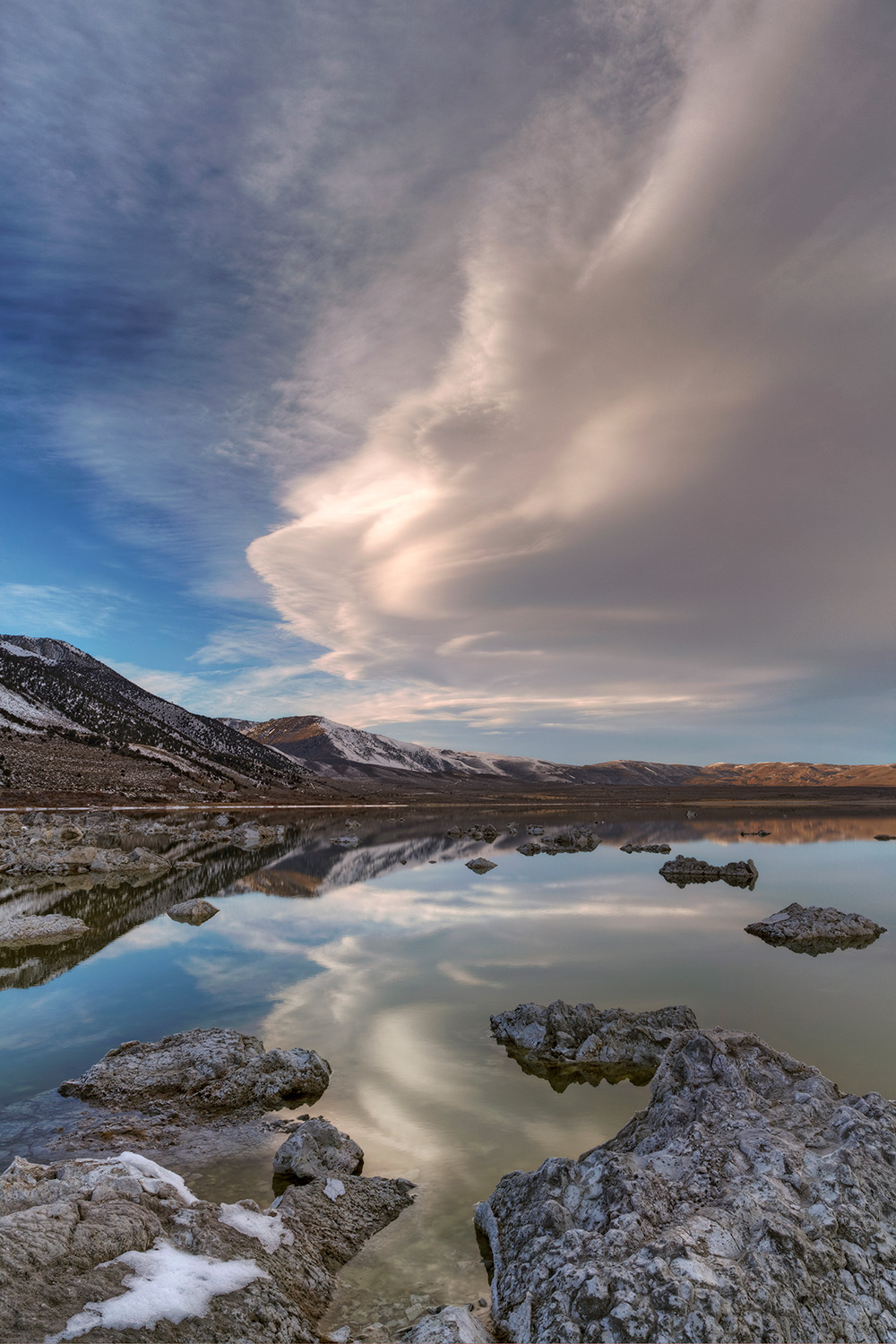
This essay, written by Frances Spivy-Weber, appears in the 2019 Mono Lake Calendar.

When I became Executive Director of the Mono Lake Committee in January 1997, its Board of Directors had decided to reinvent the Committee and to renew the original mission to protect the lake at the same time—not an easy transition for its members or the staff. The Committee was founded to save Mono Lake, which, at first, meant fighting the Los Angeles Department of Water & Power (LADWP) creatively but tenaciously in order to secure more water for Mono Lake and its tributary streams.
Without breaking stride, the Committee needed to learn to balance continuing vigilance of LADWP with the new challenge of working with LADWP on multiple fronts: education, monitoring, restoration, and structural changes in the Grant Lake Reservoir Dam and other aqueduct infrastructure that controlled streamflow to the lake. A new strategy was needed to keep alive both the fighting soul of the Mono Lake Committee, while also growing the Committee’s programs that would be important at the time and for generations to come.
The good news is that the Mono Lake Committee could “walk and chew gum” at the same time. It has not always been easy, nor has it always been clear how to accomplish both—but this dual approach is now embedded in everything the Committee does.
The first big decision was whether to reboot the Committee after getting the positive State Water Resources Control Board decision that LADWP must share water with Mono Lake. “Wasn’t the lake saved?” people would ask. Important, too, was the promise from Los Angeles that there would be no appeal of the State Water Board decision—after almost 20 years of fighting, it was logical to think they might. Now, more than twenty years later, it is hard to imagine there could have been no Mono Lake Committee, but at the time it was an option. Luckily, the Committee’s Board of Directors decided to stay the course.
Next, where would the Committee expand its programs? Education and restoration were two immediately clear answers, with solid bases on which to build. The Outdoor Experiences program was already providing opportunities for families and youth, particularly from Southern California, to spend time at the lake. At the time, LADWP allowed the Committee to use a former aqueduct caretaker’s house for the program for one dollar a year—a good faith nod to the importance of working together towards solving California’s water needs into the future. That program has thrived—growing into what is now the Mono Basin Outdoor Education Center, thanks to the dedicated staff and to the fascination that all who come to the lake develop once they get to know more about Mono Lake. Now, two dozen groups spend up to a week each year enjoying all that the lake and its surrounding watershed has to offer.
Restoration had begun already, too, based on the sound scientific findings of many of the individuals and institutions that were engaged in protecting the lake and streams. Trees were being planted and efforts were made to support the broadening of the riverine system, but mostly the streams were allowed to recover on their own, in natural ways.
And there were programs that did not have to change, such as the Mono Lake Calendar. It had always promoted the lake and the surrounding environment with beautiful landscape images of each month. The only innovation was to add even more pictures, albeit smaller, within each month, bringing in more of the basin’s wildlife and botany.
But there were new programs, too. During the lawsuit years, Committee members and supporters would ride their bicycles hundreds of miles from Los Angeles to Mono Lake with vials of water filled at LADWP’s reflecting pool to be poured into the lake at the end of the ride to raise awareness of Mono’s plight. Once the Committee had won at the State Water Board, however, it was an outdated visual. We experimented for several years by joining others for a bicycle ride in the Mono Basin, which was fun, but eventually the Bike-A-Thon was replaced with the Mono Basin Bird Chautauqua. This allowed Committee members of all ages and dexterities to enjoy the lake and to see and participate in the subtle and obvious changes that were happening when more water flowed in snowy years and less in droughts. More than 300 people come to the Chautauqua every year now.

There were films made about the Committee in this new era—the most important, award-winning one is The Mono Lake Story, which you can see at the Mono Lake Committee Information Center & Bookstore in Lee Vining. The bookstore and messaging in the store were remodeled to tell the David and Goliath story of how the Committee successfully fought and won against LADWP as well as to show how the story is playing out today.
The Committee added more property to its base in Lee Vining, the town overlooking Mono Lake. This new property, a former motel, was converted to low-cost housing and meeting space for scientists—encouraging those studying the area to make Lee Vining their base and to share their findings with the community. Since this program began in 2004, 138 researchers working on 81 field season projects have used the Committee’s facilities. These studies have covered many wildlife species—from alkali flies to Greater Sage-Grouse to Willow Flycatchers and more. They have also focused on air quality, climate science and paleoclimatology, and geomicrobiology.
There is now a collaborative program to train volunteers to help federal, state, and local agencies and organizations do their jobs to educate tourists visiting the area. These volunteers also play an important role doing much-needed hands-on restoration work. The Mono Lake Volunteer program has 87 active volunteers and continues to grow!
Since the 1994 State Water Resources Control Board made its historic decision requiring LADWP to share water with Mono Lake and its tributary streams, the decision by the Committee to remain fierce in protecting the lake and to also work with LADWP and Los Angeles where possible, has been a good one. LADWP is a large bureaucracy in a large city with many priorities. The Mono Lake Committee is the essential lookout for threats or obligation lapses that could harm the lake as well as to say “Good job,” when LADWP’s actions warrant a pat on the back. The Committee is essential in educating newcomers to leadership roles in the Mono Basin, Sacramento, and Los Angeles, as well as in reminding Californians and visitors from around the world that the lake continues to need their attention.
It has been a joy to have had a role in the Mono Lake story, and this joy is shared by those who love the lake and continue to support it in small and large ways. Long Live Mono Lake.
Frances Spivy-Weber, former executive director of the Mono Lake Committee and former Vice Chair of the State Water Resources Control Board, is now retired and lives with her husband, Michael, in Sacramento. Fran continues to enjoy the opera and symphony in Los Angeles; exploring natural areas at Mono Lake, the coast, and deserts; and best of all, spending time with friends. Of course, she and Mike travel a lot, too.
